Please click here to access the main AHDB website and other sectors.
- Home
- Knowledge library
- Tarsonemid mite on strawberry: Crop damage
Tarsonemid mite on strawberry: Crop damage
Learn more about the damage caused by strawberry tarsonemid mite, including the symptoms that can be found on the leaves, flowers and fruit.
This information was last updated in 2018.
How do the mites cause damage?
Injury to the strawberry plant is caused when tarsonemid mites feed on the contents of the surface cells of very young strawberry leaves.
The mite feeds using a pair of pincer like jaws (chelicerae) and then inserts its needle-like mouthparts to inject toxic saliva.
Leaf symptoms
Feeding usually takes place on the upper surface of the main vein between the two halves of the folded leaflets, before they have expanded and opened.
As the damaged leaflets expand, the feeding injury makes the surface of leaves rough, twisted, wrinkled and discoloured with a characteristic brown bronzing appearance (Figure 1). The leaves sometimes display signs of leaf-edge curl (Figure 2).
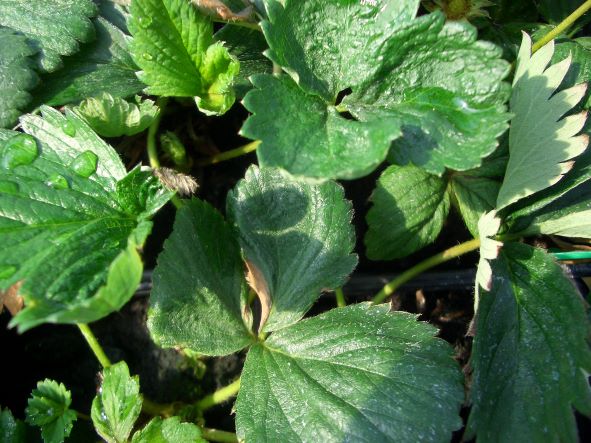 NIAB
NIAB
Figure 1. Affected leaves displaying rough and wrinkled appearance following tarsonemid mite feeding.
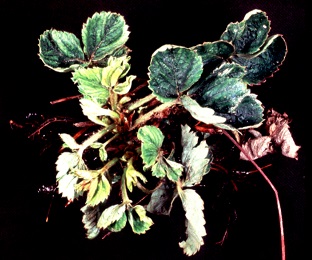 NIAB
NIAB
Figure 2. Affected leaves which are curling upwards at the margins.
Flower and fruit symptoms
Attacked plants are stunted and young leaves and flower trusses often turn brown and die in severe infestations.
Patches of stunted plants throughout the crop can be observed. Both flower bud formation and the number and size of fruits can be reduced, affecting yield (Figure 3).
On everbearers, the later fruits may turn brown and dry up (Figure 4).
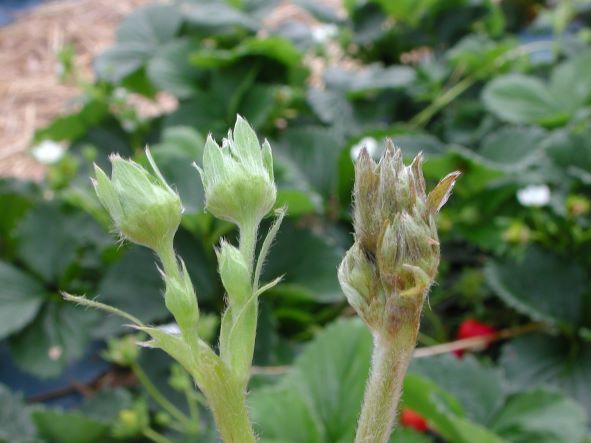 NIAB
NIAB
Figure 3. Symptoms of flower-truss die-back as a result of tarsonemid mite feeding.
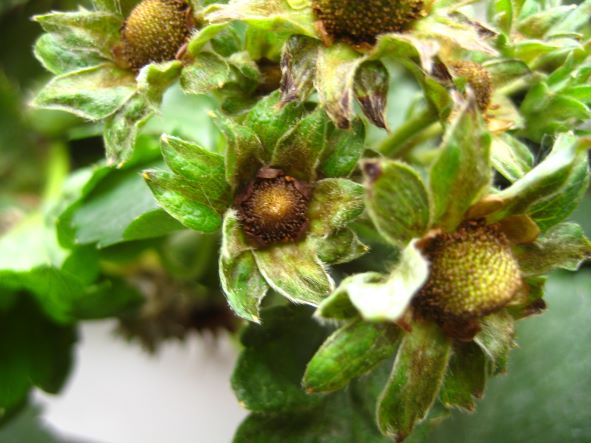 NIAB
NIAB
Figure 4. Fruits on everbearers tend to turn brown and dry up.
Symptoms on strawberry runners
Another indication of damage in some varieties, is the formation of roughened stolons, or ‘dog toothing’ on runners, presumably from previous feeding damage when the runner was in the crown of the plant (Figure 5).
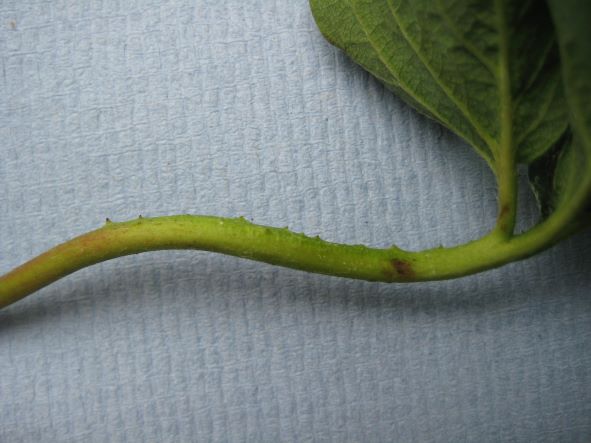 NIAB
NIAB
Figure 5. 'Dog-tooth’ effect on runners caused by earlier mite feeding as the stolon was developing in the plant crown.
What are the symptoms similar to?
Symptoms are sometimes confused with nematode or shallot aphid damage.
However, nematode injury shows up earlier in the spring and never shows any leaf-edge curl.
Nematode damage is also less likely in plants grown in substrate such as coir.
Author/s
The content for these web pages was authored for AHDB by Michelle Fountain and Jerry Cross (NIAB).
Topics:
Sectors:
Tags:

